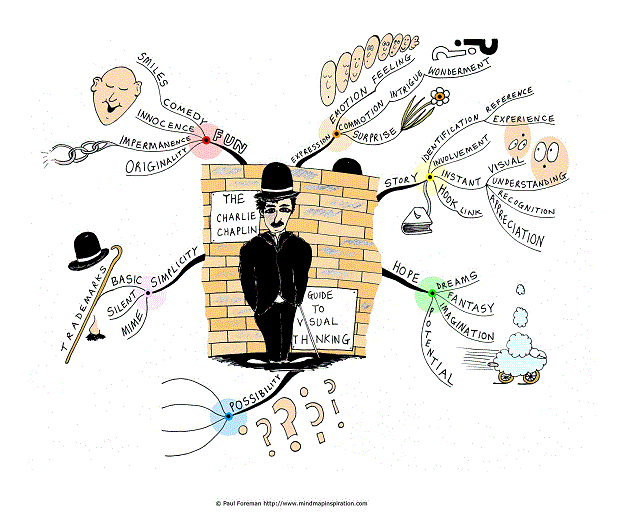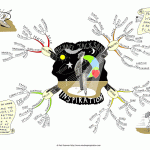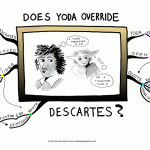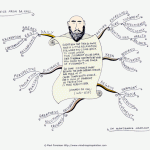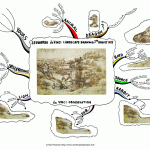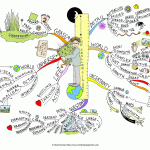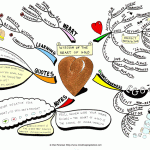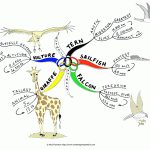Charlie Chaplin, master of mime, perfected the art of visual entertainment. The British film director and actor, Sir Charles Spencer Chaplin (1889 – 1977) famous as a skinny tramp with a cane, bowler hat and moustache starred in films such as The Gold Rush (1925) and Modern Times (1936).
The creative genius of Charlie Chaplin has similarities to the field of visual thinking. The Charlie Chaplin Guide to Visual Thinking mind map highlights six areas through which Charlie Chaplin expressed his famous character of the tramp.
Simplicity
The tramp makes an instant visual impression through simple elements, easily identifiable. Using three main trademarks; the bowler hat, cane and moustache coupled with silent mime the character is immediately recognisable. We can relate to him instantly.
Fun
The format is basic and original; the tramp taps our emotions from laughter and smiles, through to fear and danger. Overall, the character portrays innocence and fun.
Expression
The tramp’s character is expressed through emotions and feelings; a mix of intrigue and surprise keeps us interested and wanting to know the outcome.
Story
The tramp takes us through mini hooks; small sagas we can identify and relate to either through personal experience or recognition and appreciation. Drawn in and involved we follow the ups and downs, the commotion and eventual outcome, both moment to moment and longer term.
Hope
Charlie Chaplin plays on our dreams, fantasy, imagination and potential. He asks questions, provides answers and sometimes leaves us dangling in the midst of the unknown.
Possibility
The tramp also stands for infinite possibility; open-ended potential – the intrigue of “What next?”
In the world of visual thinking and making an instant impact here are the six areas identified in the mind map presented as questions to prompt ideas:
Simplicity – How can I simplify to create instant impact?
Fun – How can I make what I do more enjoyable?
Expression – How can I connect emotionally?
Story – How can I create a hook both short and long term?
Hope – How can I encourage both hope and imagination?
Possibility – How can I represent infinite possibility and potential?
Charlie Chaplin is a master of intrigue, visual impact and instant understanding.
Take a moment to search out some of his video clips (examples below) and you’ll see how he can create an avalanche of visual input every few seconds. If you pause the videos you’ll see how the information forms the story even if only through his expressions, body language and a few props. We say a picture is worth a thousand words. In Charlie Chaplin’s case a “look” is worth a thousand words 🙂
Within your visual arena how might you incorporate some of Charlie Chaplin’s qualities for instant appeal, instant recognition; instant understanding?
See also:
Why I feel Visual Thinking Works Mind Map
More from Mind Map Inspiration:
Submit your review | |
Improving the quality of students' knowledge and skills

